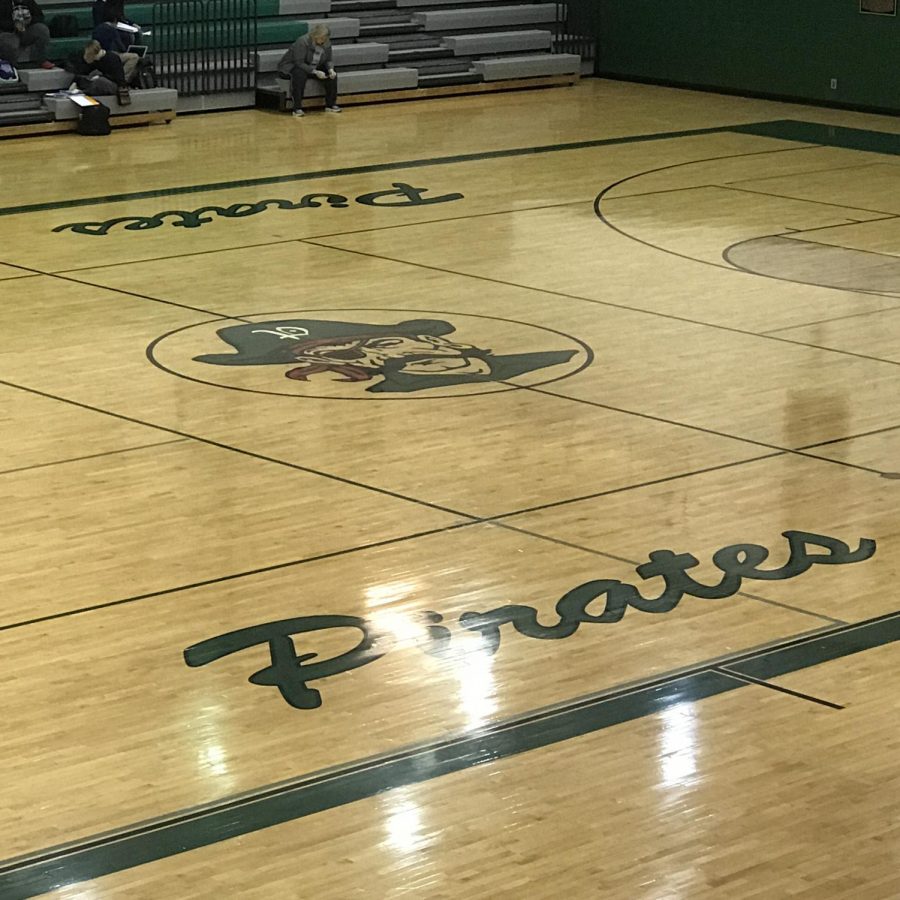
Recently, there have been a lot of rumors going around Pattonville and the city of Bridgeton about the situation at the Bridgeton Municipal Athletic Complex (BMAC), which is where many local baseball teams play their baseball games and is and has been a public family location for many years. The rumors spreading are that the neighboring Westlake Landfill has leaked radioactive material onto BMAC property and that the park will shut down, which was brought to public attention after local residents tested a drainage ditch in the parking lot adjacent to BMAC property (not actually on the property).
The local residents that ‘tested’ this material are not professional, and had it brought to public attention after hiring the lawyer that is also suing the Westlake Landfill in Bridgeton.
Because of the rumors in the news and by residents that radioactivity is present at BMAC, a large-scale youth baseball tournament that was to take place at the complex May 2-4 was canceled because the curator of the tournament heard about these rumors and withdrew the annual tournament which was to be held.
This makes BMAC take a huge financial loss, and also makes local businesses take a hit as well. The 92-team tournament with teams from all over the Midwest come to Bridgeton and stay in local hotels and eat at local restaurants for the 2-3 days that they’re here. With that many people affected, the whole city of Bridgeton is taking a huge financial hit. There are even parents who are not allowing their kids who play in local leagues that play at BMAC until the situation is cleared up, all based on these rumors.
Below is the official statement from the city of Bridgeton which has detailed information on the situation, including the tests that the EPA (Environmental Protection Agency) have already conducted twice in the month of April, which will explain why all is safe at BMAC:
“Council, Staff, BMAC Patrons –
Park employees have been receiving many questions from various sources on the publicity appearing in the Post Dispatch, speculating on the presence of radio-active material outside the boundaries of the West Lake Landfill. There is no question that activities at The Bridgeton Municipal Athletic Complex (BMAC) and housing sales in Bridgeton are being hurt by the ongoing speculation. I believe Mr. Totterer, Bridgeton Athletic Association’s president, provided an excellent answer to such an inquiry. The administration has contacted the EPA for information about the tests being referred to in the Post Dispatch, since these results were provided to the EPA. Sara Hatch of the EPA committed to responding after their own experts evaluated the information provided by an activist. Of course, as with any professional testing, strict protocols must be followed for validation purposes.
Mayor Conrad Bowers”
Another example of a statement issued by the city of Bridgeton comes from President of the BAA Bob Totterer
The article in question surrounds an allegation of contaminated soil in a ‘drainage ditch’ on, or adjacent to, BMAC property. A few things must be kept in mind. First of all, the alleged test was conducted by a local resident(s), not by professionals who are trained to conduct such studies and accurately interpret the findings. That being the case, the purported results of that test should be considered suspect, to say the least, unless and until they can be corroborated by professionals who are trained in that field.
Secondly, and perhaps more importantly, you should know that there are several state and federal agencies closely supervising the work and official testing taking place in and around both the Bridgeton Landfill and the West Lake site. Among these are the Environmental Protection Agency, the Missouri Department of Natural Resources and the United States Geological Survey. If you visit the City of Bridgeton’s website – www.bridgetonmo.com – you will find the links to the websites of these organizations so you can see firsthand what has been established as fact and what hasn’t. The past few months, the EPA has been publishing what amounts to a weekly update, which you will find very informative.
These organizations, in particular the EPA, have been very transparent and consistent in maintaining that there is no radiological threat outside the barrier at the West Lake facility. They are conducting ongoing air quality tests in the area surrounding both sites; BMAC is no doubt included within that test area. The April 21st EPA update states:
“State and EPA data both show that there is no evidence that radiological material has traveled beyond the boundary of the West Lake Landfill Superfund Site, and that the site remains protective of public health.”
I hope this sets the record straight and helps to assuage the fears of your team and their families.
Bob Totterer
President, BAA
The samples in question that were referred to in the St. Louis Post-Dispatch article from last week, have been submitted to the City of Bridgeton, and in turn, have been submitted to the Missouri EPA and Department of Natural Resources for further testing and analysis. Although the city has noticed some inconsistencies between the provided results and the PD article, the city is trying to be open and honest with everyone involved, and has requested the EPA and DNA to expedite their review and provide the City of Bridgeton with the conclusions as soon as possible.
Until these results are received, BMAC will remain open for business as usual, and do not feel as though there is anything harmful on the grounds of the complex.”
As mentioned, the EPA has already conducted tests regarding BMAC and the Westlake Landfill. Below is the official statement from the EPA:
“State and EPA data both show there is no evidence that radiological material has traveled beyond the boundary of the West Lake Landfill Superfund site. The site remains protective of public health.
As part of its preparations for the future construction of an isolation barrier at the West Lake Landfill Superfund site, EPA is developing plans and securing locations for air monitoring and radiation screening to be conducted off-site, both before and during the barrier’s construction. EPA Region 7’s online newsletter, West Lake Update, recently highlighted this effort.
This upcoming air monitoring activity is part of EPA’s continued efforts to ensure the Superfund site is protective of the public health. The EPA previously monitored for radiation along the corridor around the site in March 2013, when the agency conducted a wide-scale aerial overflight screening of the site, which included screening of areas outside the site boundaries. This screening included areas between the site boundaries and the Bridgeton Municipal Athletic Complex. If radiologically-impacted materials had spread from the site to adjacent areas off-site because of erosion from wind or water, it was anticipated that the screening would provide indications of that migration. However, the results of the overflight screening indicated no detections of radiation above normal background levels were found immediately beyond the site boundaries.
A report of the March 2013 radiation screening activity, and related information, is available online:
Contact Sarah Hatch, Government Liaison for the U.S. Environmental Protection Agency Region 7 at (913) 551-7199 or by email at hatch.sarah@epa.gov to voice concerns.













